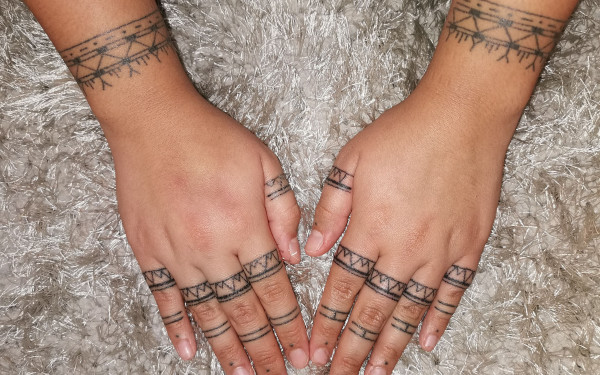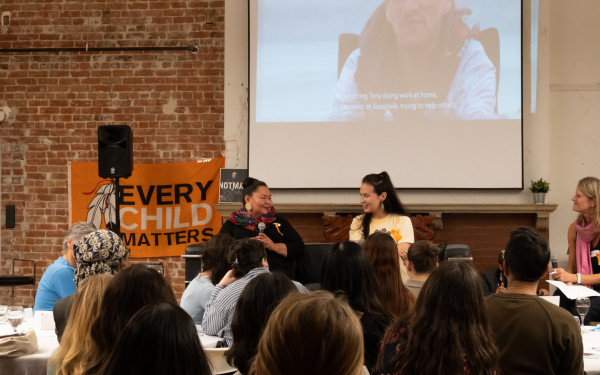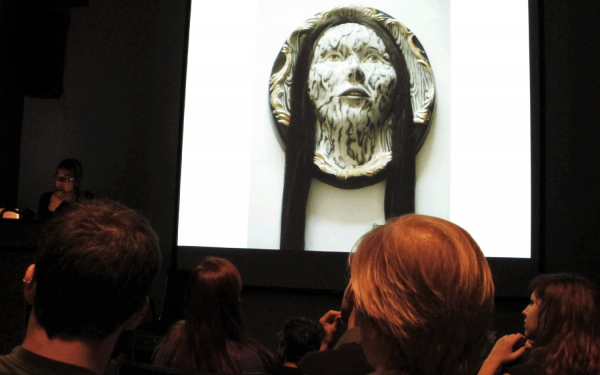Shared Momentum
Inuit Idle No More Faces Unique Challenges
For the past three years, Robbie Watt’s job has been to listen to real-life horror stories.
As ethical director of the Inuit Sub-Commission—part of the Truth and Reconciliation Commission in Ottawa that evaluates Inuit claims of wrongful abuse during the residential school period—Watt sees the impacts these schools have passed on to today’s modern Inuk.
During this period, 150,000 aboriginal, Inuit and Métis children were mandatorily sent to schools outside of their communities under the federal government’s “aggressive assimilation” policy.
At the time, government employees were tasked with ensuring all native children attended. Canada’s Department of Indian Affairs funded the religiously run schools, with the aim of educating aboriginal children and preparing them for mainstream society.
At the height of the period in 1931, there were 80 such schools operating across the country; the last of them closed in 1996.
“The majority have fallen through the cracks, to where they end up being part of the justice system, where they become wards of the state,” said Watt, an Inuk himself. “Many have indicated that they have turned to alcohol to numb the pain, to forget.”
The schools eradicated culture, the Inuit language—Inuktitut—and the idea of family from many lives at an early age.
Now, many don’t know how to be parents, said Watt.
“This was just, for some, a total nightmare,” he said, adding emotional scars are still being passed down from generation-to-generation.
But Watt hopes one thing has potential to change this pattern: Idle No More.
A Catalyst for Change
The grassroots movement, which started in November 2012, has been shining a spotlight on First Nations issues.
At the forefront of concerns is the Conservative government’s omnibus C-45 budget bill that allows First Nations land to be leased more easily.
But the Inuit have a different bone to pick with the government.
They are struggling to hold the government accountable for benefits outlined in land claim agreements that are supposed to help the Inuit become self-reliant and break a historical cycle of social problems.
The largest of the five modern-day agreements is the Nunavut Land Claims Agreement, signed in 1993, which paved the way for the creation of the territory of Nunavut in 1999.
In the land claim, the Inuit received a $1.148 billion settlement and ownership of 18 per cent of the land in Nunavut. It also made the Inuit people full tax-paying Canadian citizens.
But the Inuit organization that helps make sure the government is implementing the articles in the NLCA, Nunavut Tunngavik Inc., claims the government isn’t making good on the agreement.
Last June, NTI won $14.8 million from the government of Canada in a lawsuit for failing to upkeep Article 12 of the agreement, which states that the government must develop a general monitoring plan for the NLCA.
More lawsuits are expected to settle in the courts in the future as well.
“Obviously, we have our own lawsuit against the federal government—and that’s just a part of our issues that we have with this government,” NTI’s chief executive officer, James T. Arreak, told The Link from Nunavut’s capital, Iqaluit.
“It looks like willful ignorance on the government [when it comes to] listening to our concerns and our challenges,” said Arreak.
NTI President Cathy Towtongie shared Arreak’s sentiments in Jan. 10 in a press release after attending a meeting with Attawapiskat Chief Theresa Spence in Ottawa.
“The government of Canada has failed to implement and respect these agreements in many respects, which is a major factor in the perpetuation of poverty and other disadvantages facing aboriginal Canadians,” Towtongie said.
Singular Movement, Separate Issues
Arreak said he hopes the Canadian government is taking Idle No More seriously, and thinks a result of the movement could be better communication between the Inuit and the government to ultimately help solve some of the social problems facing Inuit Canadians.
But the Inuit’s voice in the Idle No More movement to address these specific issues has taken a backseat to First Nations issues, according to Watt.
“I think in a way, the Inuit are missing out; rather than being a part of it, they’re just saying, ‘It’s a First Nations issue,’ [but] it really isn’t,” he said.
“Because [there’s so little Inuit], it doesn’t appear that we’re nearly as involved,” said Watt. “But I guarantee you, when you go on Facebook, there’s quite a few Inuit wondering why aren’t we involved.”
There are about 50,000 Inuit living in Canada according to the latest Statistics Canada numbers, compared to over 750,000 status and non-status Indians in Canada.
And of the Inuit population, 63 per cent live in rural areas, mostly in northern Canada, whereas only eight per cent live in an urban metropolitan area—meaning many miss out on the large urban rallies.
Protesting is also something of a new concept to the Inuit, who have traditionally lived their lives steering away from confrontation.
But demonstrations over the high cost of food in the north in the summer of 2012, which brought several hundred people from around the territory to the streets demanding government action, have sparked a new change in this mindset.
Now, there’s an Inuit-specific Facebook page dedicated to the Idle No More movement with 167 members, and there have been a few flash mobs and protests in Nunavut as a result.
Marie Belleau is one Inuk looking to buck the trend of Inuit conformity.
A student-at-law graduate from Université Laval and the University of Ottawa, Belleau has been to two demonstrations in Ottawa where she and a few other Inuk have proudly donned body-length yellow-and-white Nunavut flags.
“The Inuit way, you don’t speak too loud or you don’t speak louder than your neighbour—I think for community harmony, it’s just been this way,” Belleau said.
“But slowly Inuit are becoming more and more vocal and standing up for certain issues.”
Belleau doesn’t think there’s a big divide between Inuit and First Nations issues, but thinks the two aboriginal groups should work as one during this movement.
“First Nations and Inuit—we have this tremendous healing to do, because of all these wrongs that have been committed,” Belleau said. “I see it as fighting alongside our cousins.”
Watt, however, thinks differently. He thinks the Inuit need to start “breaking clear” from other aboriginal groups.
“For years, Inuit and First Nations and Métis have just been lumped into one,” he said.
Watt says Inuit face specific differences—like not having access roads to many Nunavut communities, the Inuktitut language, their culture and “the fact that we don’t have the same ideologies.”
But Belleau believes both aboriginal groups live in poverty and face similar tragedies, and she’s “fed up” of “living in third-world conditions” and points to more resources and healing as a solution.
“If you’ve been sexually abused, or if your parent has committed suicide in front of you, [something that’s] way too common, […] you can’t just forget it. You can’t just ignore it,” Belleau said.
“We have to have the resources to heal as people in order to become equal, in order to become more educated, and to have really an equal standing and a fair chance in life to become independent people and fully what Canada stands for,” Belleau said.
And for Belleau, this is just the beginning of an important dialogue.
“All across the world we have had support. Greenland, New Zealand, you name it. I think it’s just the start.”

_851_509_90.jpg)
_600_832_s.png)




ED1(WEB)_600_375_90_s_c1.jpg)